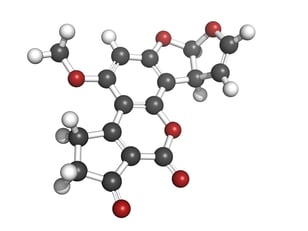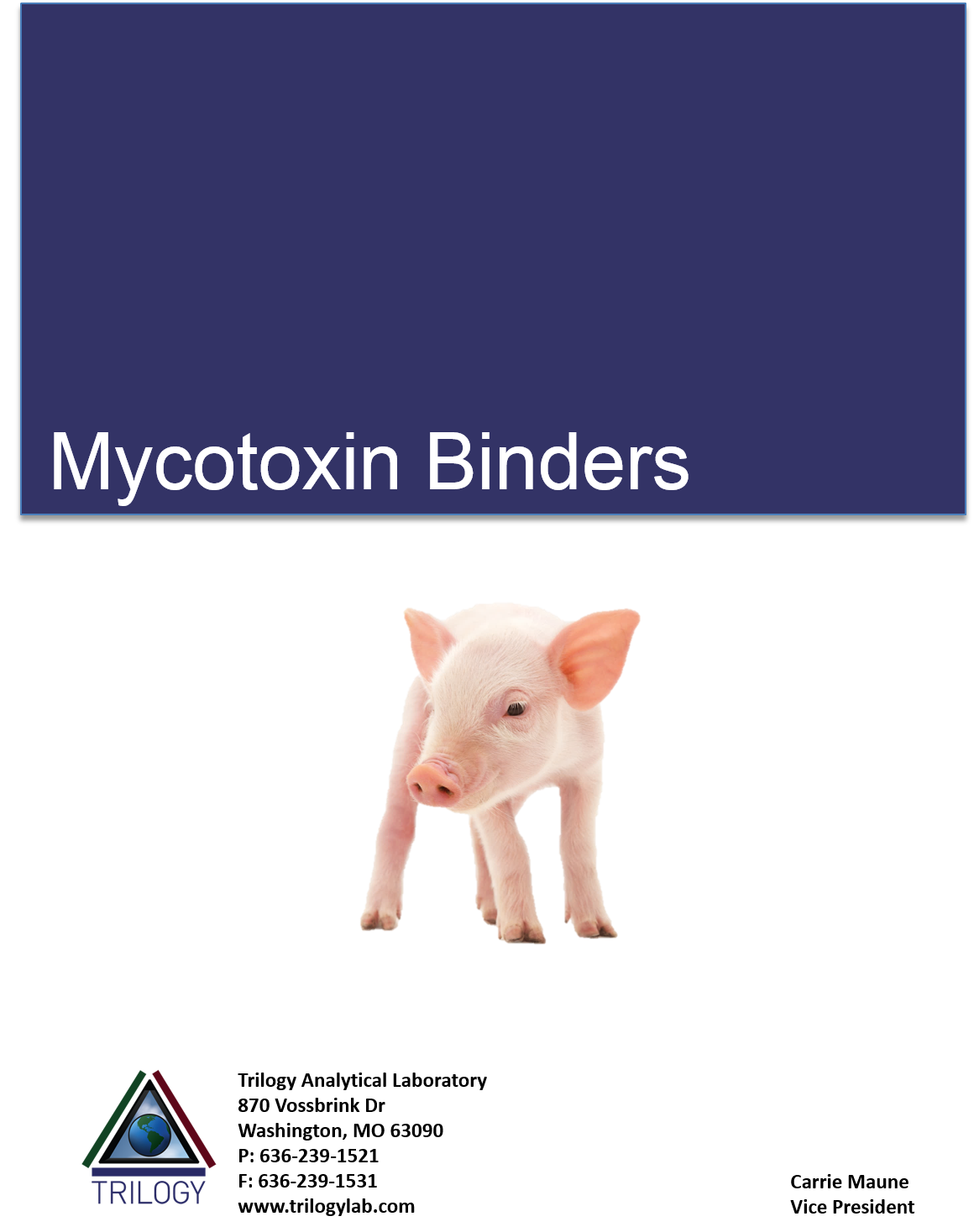How can mycotoxin contamination be combatted? The best mycotoxin prevention plan is to avoid mycotoxin contamination in the fields as crops are maturing. However, this is rarely, if ever, truly achievable. Since this is not the most feasible option, the next best solution is some type of treatment once the toxins have been detected, during or shortly after harvest. Options such as mechanical sorting, physically washing commodities, polishing and milling are just a few types of methods that can be used to reduce or possibly eliminate mycotoxins post-harvest. But what happens when mycotoxins do make their way into producers’ feed bins? When animals are fed mycotoxin contaminated diets, profits silently slip away due to many issues such as diseases, poor conversion, and reproductive issues, to name a few. Even at relatively low levels, mycotoxins can cause serious profit stealing problems to animal producers.
 |
| Pictured: Molecular Structure of Aflatoxin B1 |
Are there any options for mycotoxin management at this late stage of the cycle?
For many years, products such as clays, bentonites and aluminosilicates have been successfully added to feedstuffs to bind Aflatoxins. Research and feeding trials done in the 1980’s showed that many of these clay products, when added to animal diets, successfully bound Aflatoxins and removed them from the animals, exiting through waste products. This safe and relatively inexpensive method of simply adding a product to animal rations improved overall animal health and minimized producers’ losses due to mycotoxins.
Mycotoxin binders have come a long way since the 1980’s. There are many types of compounds today that are also called mycotoxin “deactivators”. These products range from the original clay-type products to yeast cell wall products and enzyme products that have been developed with more than Aflatoxin binding capabilities in mind. The market for these types of products has increased dramatically in the past 10 years. In many countries, these types of products are added routinely to animal diets to improve health and performance.
How are mycotoxin binders “found”?
Typically, after a product has been selected as having the possibility of mycotoxin binding, laboratory tests are performed to determine the binding efficiency. This is done by selecting the toxin (or toxins) in question and allowing the mycotoxin binder to interact with that toxin in a controlled experiment in a laboratory setting. These types of experiments determine if the binder can adsorb the toxin in a pH controlled environment (basically a test tube experiment). An additional step called “desorption” is performed to determine if the binder can “hang on” to the toxin during a change in pH that typically mimics the digestive process.
These experiments are an inexpensive way to get a general idea of a binder's capabilities and if it should be considered for the next step in the process, which may be a more complicated laboratory test or a full feeding trial. Feeding trials are both lengthy and extremely costly. Getting some laboratory data prior to these trials can optimize research budgets and provide a baseline to compare many potential binders simultaneously.
Trilogy Analytical has been performing mycotoxin binding tests for over 18 years. We work to tailor laboratory procedures to meet the specific requirements of each binder, or of the specific animal’s diet that is targeted. This cost effective method for mycotoxin binder evaluations can be used for quality control of known binders, or to choose new possibilities for binders in years to come. For more detailed information on mycotoxin binders and the laboratory methods used to test these compounds, see our whitepaper on the topic.
 |

Available in both English and Spanish
|

Share on Social Media: